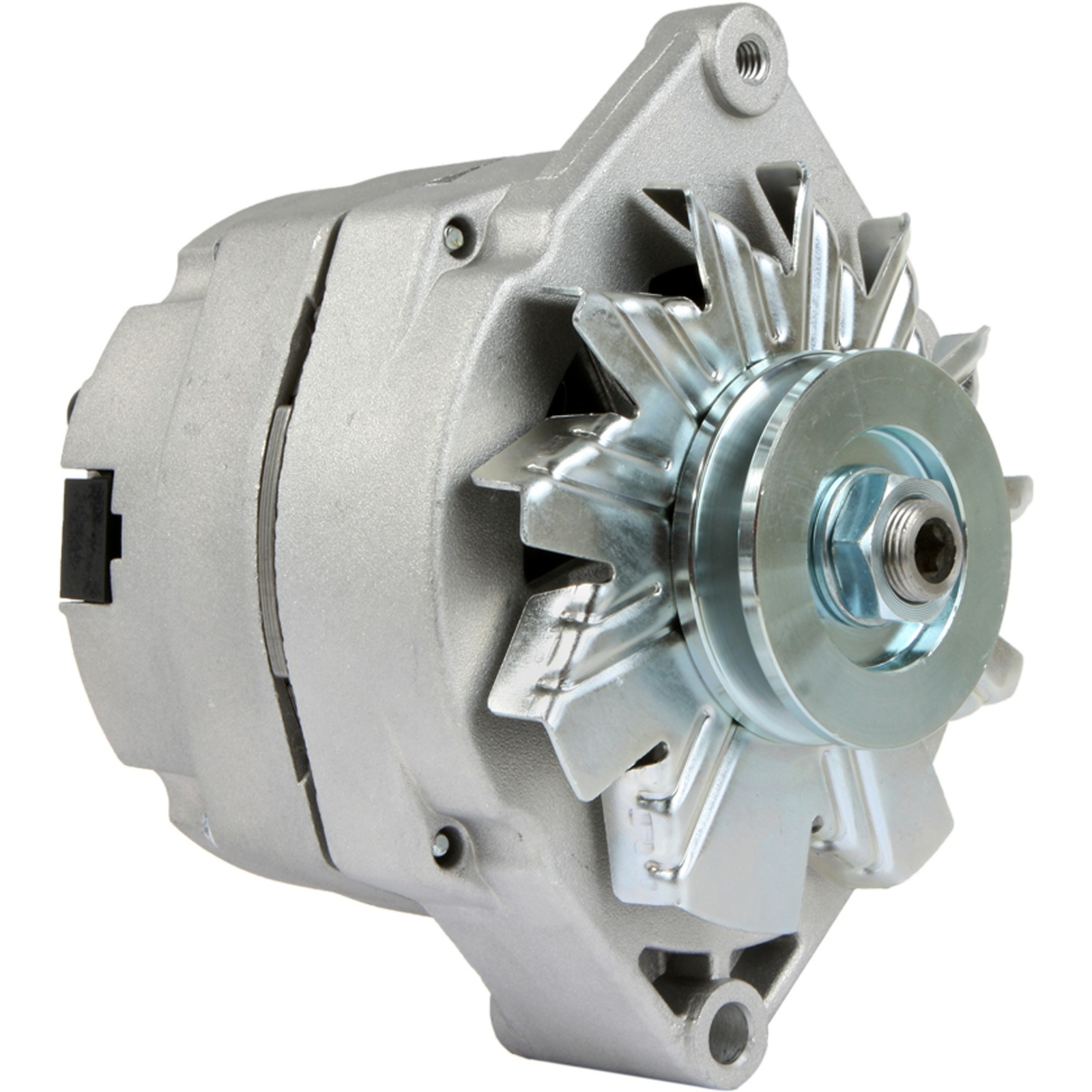
Simplifying Power Connections Without Compromising Performance
When upgrading or customizing a vehicle’s charging system, choosing between a single wire and a 3-wire universal alternator can make a significant difference in functionality, ease of installation, and voltage stability. These alternators are widely used in hot rods, resto-mods, custom swaps, classic cars, and off-road builds due to their universal mounting and flexible wiring options.
Let’s explore what each type offers and when one might be better than the other.
🔧 What is a Single Wire Alternator?
A single wire alternator (also called a self-exciting alternator) requires only one connection — from the battery terminal on the alternator to the positive post on the battery.
✅ Advantages:
- Easiest Installation – Just one wire, no extra connections
- Clean Engine Bay Look – No need for external voltage sensing or ignition wires
- Activates Automatically – Internally regulated, begins charging once a threshold RPM is reached
- Great for Classic & Custom Builds – Especially when simplicity is preferred
⚠️ Limitations:
- Higher RPM to Start Charging – May not begin charging until ~1,200 RPM unless pulley size is adjusted
- No Remote Voltage Sensing – Cannot adjust charging based on battery load/distance
- Less Voltage Accuracy – Slightly more voltage fluctuation in complex systems
🔧 What is a 3-Wire Alternator?
A 3-wire alternator uses:
- Battery wire (main output)
- Ignition/excite wire (activates the alternator)
- Voltage sensing wire (monitors battery voltage and adjusts output)
✅ Advantages:
- Improved Voltage Regulation – Maintains more accurate voltage under changing loads
- Charges at Lower RPM – Begins charging right after engine start
- Voltage-Sensing Capability – Measures true battery voltage and adjusts accordingly
- Better for Modern Builds – Ideal when power stability matters (e.g., EFI, audio, lighting)
⚠️ Limitations:
- Slightly More Complex Install – Requires three wire connections and proper routing
- More Wiring in Engine Bay – May not be as clean visually in show builds
- Requires Keyed Ignition Signal – Needs switched 12V to start charging
🛠️ Universal Fitment: Where They Excel
Both single and 3-wire alternators are widely available in universal GM-style or Denso-style casings, making them ideal for:
- Hot rods & resto-mods
- Engine swaps (LS, V8 conversions, etc.)
- Off-road buggies & rock crawlers
- Classic trucks & muscle cars
- Simplified builds without complex electronics
They can often be installed using universal brackets or simple custom mounts.
🔋 Summary: Which Should You Choose?
| Feature | Single Wire | 3-Wire |
|---|---|---|
| Ease of Install | ✅ Very Easy | 🔧 Moderate |
| Charging at Idle | ⚠️ May lag without RPM | ✅ Starts charging immediately |
| Voltage Accuracy | ⚠️ Less accurate | ✅ More precise |
| System Complexity | ✅ Clean/simple | ⚠️ Slightly more wiring |
| Best For | Classic cars, show builds | Modern builds, EFI, audio-heavy setups |
⚡ Final Thoughts
Single wire and 3-wire alternators both serve important roles in modern custom and retrofit vehicle builds. Whether you’re chasing clean aesthetics and simplicity or need precision and regulation for a modern system, there’s a universal alternator to match.
Choose wisely based on your vehicle’s needs, electrical load, and wiring preferences — both options are proven, reliable, and widely supported in the aftermarket world.


